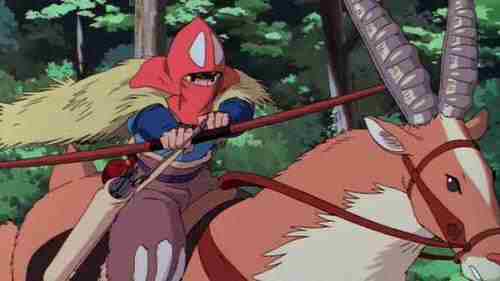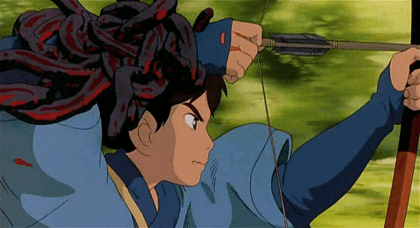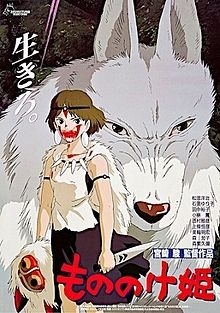Japanese Animation and Timeless Classic: Princess Mononoke
Sawako Uchida and Lee Jay Walker
Modern Tokyo Times
The Japanese anime film Princess Mononoke is a timeless classic. Indeed, aspects of the Muromachi period (approximately 1336 to 1573) become visual despite the film being based on fiction. This notably applies to Japanese folklore and the demise of the Emishi people despite the dates not corresponding to the Muromachi period. Therefore, the Emishi angle provides a glimpse into a period even older and highlights the reality that the Japanese bloodline is far from being homogenous – for example, the Ainu, Emishi, and Ryukyuan people.
Immediately the plot focuses heavily on Ashitaka, the last prince of the Emishi, who kills a demon before his village is attacked. Yet, while Ashitaka tries to understand why the demon would attack an innocent village, the demon curses his arm during the battle. The demon killed by Ashitaka is the boar god, Nago, who had become bedeviled by an iron ball that had gradually changed the real Nago into a terrifying demon.
It soon becomes apparent that his newfound super strength in his injured arm is offset by the curse ushered by Nago. This is based on the corruption entering Ashitaka and thus appearing fatal in the near future. However, the wise old female elder of the village offers a smidgeon of hope by telling Ashitaka that a cure may be possible in the lands to the west, where Nago once lived.
Aspects of the Emishi then come alive in the anime film based on several factors. These once proud people – in northeastern Honshu – were famous for horse archery and warfare tactics based on hit and run. Ashitaka, remaining strong mentally despite such terrible adversity, then meets a wandering monk called Jiko-bo. He, just like the Emishi female elder, provides some further hope by telling Ashitaka to find the Great Forest Spirit. This mighty spirit is a creature based on being Kirin-like during the day. However, at night the Great Forest Spirit turns into a giant “nightwalker.”
The anime film then flows from a young lady called San who was brought up by powerful wolves (the Princess Mononoke) and who despises humans, Lady Eboshi who leads Irontown, the wolf goddess Moro, deforestation, social outcasts who adore Lady Eboshi, the deviousness of Jiko-bo, enormous enmity between San and Lady Eboshi, and the blind god Okkoto who ransacks Irontown. Glimpses of the Great Forest Spirit – and the Kodama – create a spice of mythology that takes you back to bygone times.
Intentionally, the ending will not be given because the hope is that people will seek to watch Princess Mononoke. Yet, the richness of the ending is based on Lady Eboshi seeking the head of the Great Forest Spirit, in order for Irontown to be protected by the Emperor of Japan from encroaching daimyo. Similarly, the counter-measures taken by San to prevent deforestation, the role of wolves, Okkoto the boar god, the deviousness of Jiko-bo, and Ashitaka’s charm in trying to reach accommodation provides a great ending.
Princess Mononoke was directed and written by the highly esteemed Hayao Miyazaki. This 1997 anime film is a timeless classic based on the plot line and the many undercurrents that reach a much higher meaning.
Modern Tokyo News is part of the Modern Tokyo Times group
DONATIONS to SUPPORT MODERN TOKYO TIMES – please pay PayPal and DONATE to sawakoart@gmail.com
http://moderntokyotimes.com Modern Tokyo Times – International News and Japan News
http://sawandjay.com Modern Tokyo Times – Fashion
https://moderntokyonews.com Modern Tokyo News – Tokyo News and International News
http://global-security-news.com Global Security News – Geopolitics and Terrorism
PLEASE JOIN ON TWITTER
https://twitter.com/MTT_News Modern Tokyo Times
PLEASE JOIN ON FACEBOOK




